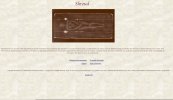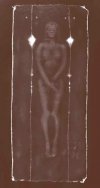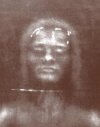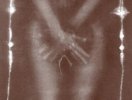mp5stab
Hair and Nails
As much as I like to see the remarks about nerve damage and the Anatomy reference drawings brought out, I have to say that trying to correct Jeddak about the finer physiological points of crucifixion is a lot like telling a fighter pilot how the wings produce lift. He definitely knows. I went through a claw hand phase, and it just kinda stiffled how much expressiveness I could get from the hands. Clenched in fists, curled in pain, somewhat relaxed, or somewhere between one of those; it adds a lot of humanity to the pose. Stilted hand posing can kill an otherwise great image. Imma be real; I think Jeddak took it very gracefully when Melania told him “This is how the wrist works” so Imma carry that grace forwards. It’s definitely something we think about, but motor nerve damage isn’t the part of the nerves the victim or executioner is focusing on.
Additionally, for all of you fine artists seeking an “out” while making plausible and realistic scenes, just remember that the nerve downs have to be split by the nail, just like every other part of the body it can be pushed aside, especially by a smallish blunt nail. Everyone has a different wrist, some people have muscles that other people don’t, there is a lot of connective tissue and tendons that may also be ruptured, so the hands could be compromised in more ways than one. So, for instance, a girl clenching her fists and the nails go in would have a different Nailing experience then a girl who is forced to keep her wrist flat with a knee on the palm of her hands. As those tendons got shifted frayed and damaged, who knows what the final hand shape would wind up being? The answer is of course what ever looks best in the art!
Additionally, for all of you fine artists seeking an “out” while making plausible and realistic scenes, just remember that the nerve downs have to be split by the nail, just like every other part of the body it can be pushed aside, especially by a smallish blunt nail. Everyone has a different wrist, some people have muscles that other people don’t, there is a lot of connective tissue and tendons that may also be ruptured, so the hands could be compromised in more ways than one. So, for instance, a girl clenching her fists and the nails go in would have a different Nailing experience then a girl who is forced to keep her wrist flat with a knee on the palm of her hands. As those tendons got shifted frayed and damaged, who knows what the final hand shape would wind up being? The answer is of course what ever looks best in the art!
Not to pick on Jeddak, who has truly made a remarkable historical fiction, but he has also certainly put some effort in to ensure that a teenage girl endures a crucifixion, instead of say, a 54 year old slave. Because that looks best in the art. He knows that the realism is there to serve the story he is trying to tell, and he tells it masterfully. You could, buy all means, tell him that most crucifixion would have featured hardened criminals and not petite teenagers. He knows, we know, that’s not the story he’s telling. It’s just the same with the wrist anatomy. I recall having exactly the same conversation about it once, a few years ago. It comes to every once in a while, so if an artist wants to show it, they will.No, they escaped from Pompeii and came to Rome in August, and Sabina was crucified in October. So they both may have still been eighteen and nineteen.











